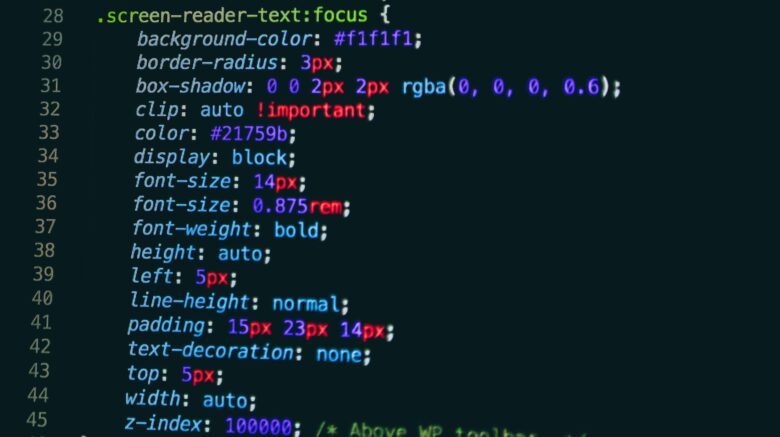Have you ever wondered how web developers create visually stunning and interactive websites? The secret sauce is CSS, also known as Cascading Style Sheets. This article is a beginner’s guide to CSS, where we’ll dive into some essential tips that will make your web development journey easier.
Understanding the Basics of CSS
So, what’s this CSS we keep hearing about, right? Well, CSS stands for Cascading Style Sheets. Now, I know that might sound like some fancy jargon, but it’s actually pretty straightforward once you break it down.
What is CSS?
CSS, or Cascading Style Sheets, is a language used for describing the look and formatting of a document written in HTML. In simple terms, it’s what makes your websites look good. It manages the colors, fonts, and layouts of your web pages.
Importance of CSS in Web Development
With CSS, you can control the layout of multiple web pages all at once. It provides you with the creative freedom to design a visually appealing and professional website. It’s a crucial skill for any web developer.
Getting Started with CSS
CSS or Cascading Style Sheets is the magic wand that transforms your mundane HTML documents into interactive, visually appealing webpages. But don’t worry, you don’t need to be Harry Potter to weave this magic.
Basic CSS Syntax
A CSS rule-set consists of a selector and a declaration block. The selector points to the HTML element you want to style, and the declaration block contains one or more declarations separated by semicolons.
CSS Selectors
CSS selectors are the part of CSS rules that determine which HTML elements the rules will be applied to. There are several types of selectors, including class selectors, id selectors, and element selectors.
Connection Between Live Casinos and CSS
In the world of live casinos, CSS plays an indispensable role. In particular, mobile live casinos leverage CSS to deliver a user-friendly and aesthetically pleasing interface. To experience it, check out this mobile live casino.
Implementing CSS in Mobile Live Casino Websites
CSS aids in structuring and designing mobile live casino websites. It ensures smooth navigation and optimal layout across different device sizes, providing a seamless gambling experience.
Practical CSS Tips for Beginners
Today, we’re going to chat about CSS. You might’ve heard it being thrown around in web development circles. It stands for Cascading Style Sheets, and it’s the magic spell that turns a bland web page into a snazzy, professional-looking site. Now, let’s jump into some practical tips that’ll make your CSS journey a breeze.
Commenting in CSS
First things first, let’s talk about comments. No, not the ones from your friends on social media, but the ones you’ll want to include in your CSS code. They’re like sticky notes reminding you what a specific piece of code does. This way, you won’t be left scratching your head when you look at your code a month later. To add a comment, use /* to start and */ to end.
The Box Model
Next up, let’s dive into the box model. No, it’s not some model made of cardboard boxes. In CSS, every element is treated like it’s in a rectangular box. This box has several layers: content, padding, border, and margin. Understanding how these layers interact is key to mastering CSS layout.
The Box Model: Padding
Padding is the space between the content of the box and its border. It’s used to control the space within the box.
The Box Model: Border
The border is the edge of the box. It surrounds the padding and content and separates the box from other elements.
The Box Model: Margin
Margin is the space outside the border. It separates the box from other elements on the page.
Styling Text and Fonts in CSS
CSS provides several properties to style text, including font family, font-size, color, text-align, and line-height. They help you to create a more engaging and readable website.
Common CSS Mistakes and How to Avoid Them
Even seasoned developers make mistakes in CSS. Common ones include forgetting to close brackets, using incorrect selectors, and misunderstanding the box model. Understanding and rectifying these errors can significantly improve your CSS skills.
Conclusion
Getting started with CSS can be challenging, but the rewards are worth it. Whether you’re developing a personal blog or a mobile live casino, CSS is your pathway to creating engaging, responsive, and aesthetically pleasing websites. Remember, practice is key!
